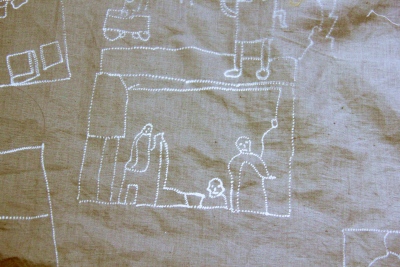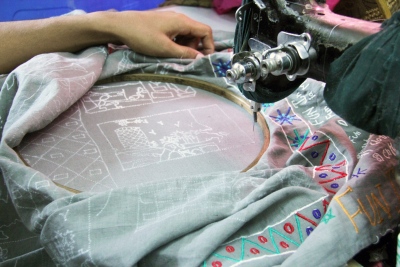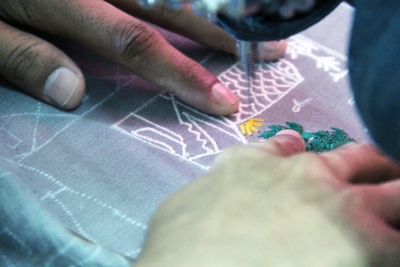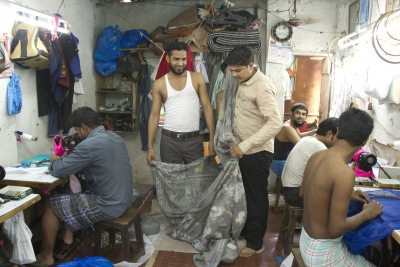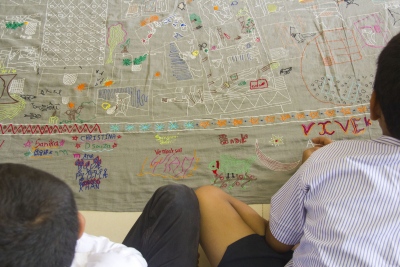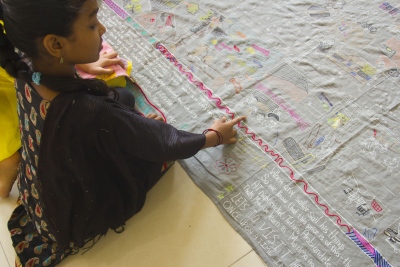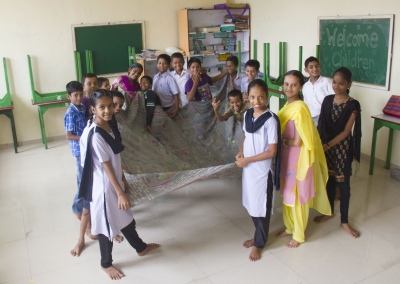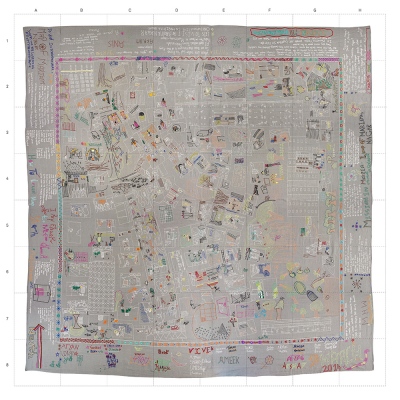

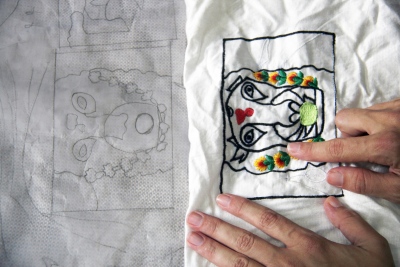
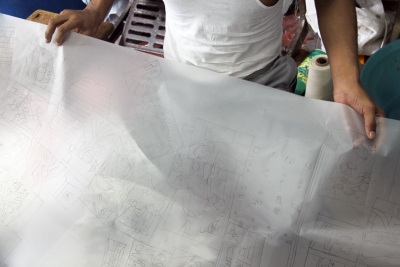

Tapestry
This three-by-three meter embroidered tapestry was made by craftsman Ameek Shaikh in the Mariamma Nagar settlement, Mumbai, 2014. It forms an interpretation of a map (comprised of photographs, drawings and annotations) made by Muktangan Love Grove 6th standard schoolchildren (11 to 12 years old) about their neighbourhood as a learning environment. Tapestry interprets the children’s map using simplified embroidered designs. Formed of two pieces of grey cotton cloth sewn together to make a square base, coloured embroidered interpretations of the children’s map are stitched. Light coloured outlines depict photograph edges; black and white yarn is used to draw photograph contents; and coloured yarns, used to depict drawings and to identify important neighbourhood aspects, from religious symbols to vegetables, animals, homes, shops, broken gutters and rubbish on the ground. Through crafted interpretation, the children’s composition of photographs and drawings is smoothed: The craftsman's embroidered translation creates a plane section of life in the settlement. It is a curated inventory or archive, not only of learning situations but also of the settlement situated in the rapidly changing global city that is Mumbai today. It is a physical example of the informal and formal flows of information and agency that create the settlement as a learning environment.
Through Tapestry, a correspondence between the children, settlement and craft took place; through our collective practice we formed an object that would provide continued opportunities for learning. As a piece of work, the tapestry is both a tool for and subject of conversation: a community produced site-specific artefact, representing one of the material cultures of the settlement, simultaneously an idea that has been ‘made material’, and a ‘natural substance that has been rendered cultural’.[1] It shows community ideas can become material and cultural through practices of design and making, and that these are opportunities for learning. The tapestry is simultaneously careful and unplanned; crafted and spontaneous; composed and at the same time of bricolage.[2] It contains a rich layering of information. It is both of and from neighbourhood Mariamma Nagar. Anthropologist Julian Thomas distinguishes material culture as a ‘doing’ rather than a ‘being’.[3] Here I would argue Tapestry can be considered as both.
[1] Julian Thomas, ‘The Trouble with Material Culture’, Journal of Iberian Archaeology, Volume 9/10, pp. 11–23, p. 15.
[2] Colin McFarlane, ‘Rethinking Informality: Politics, crisis, and the city’, Planning Theory and Practice, Volume 13, Issue 1, 2012, p. 89.
[3] Thomas, ‘The Trouble with Material Culture’, p. 16.
